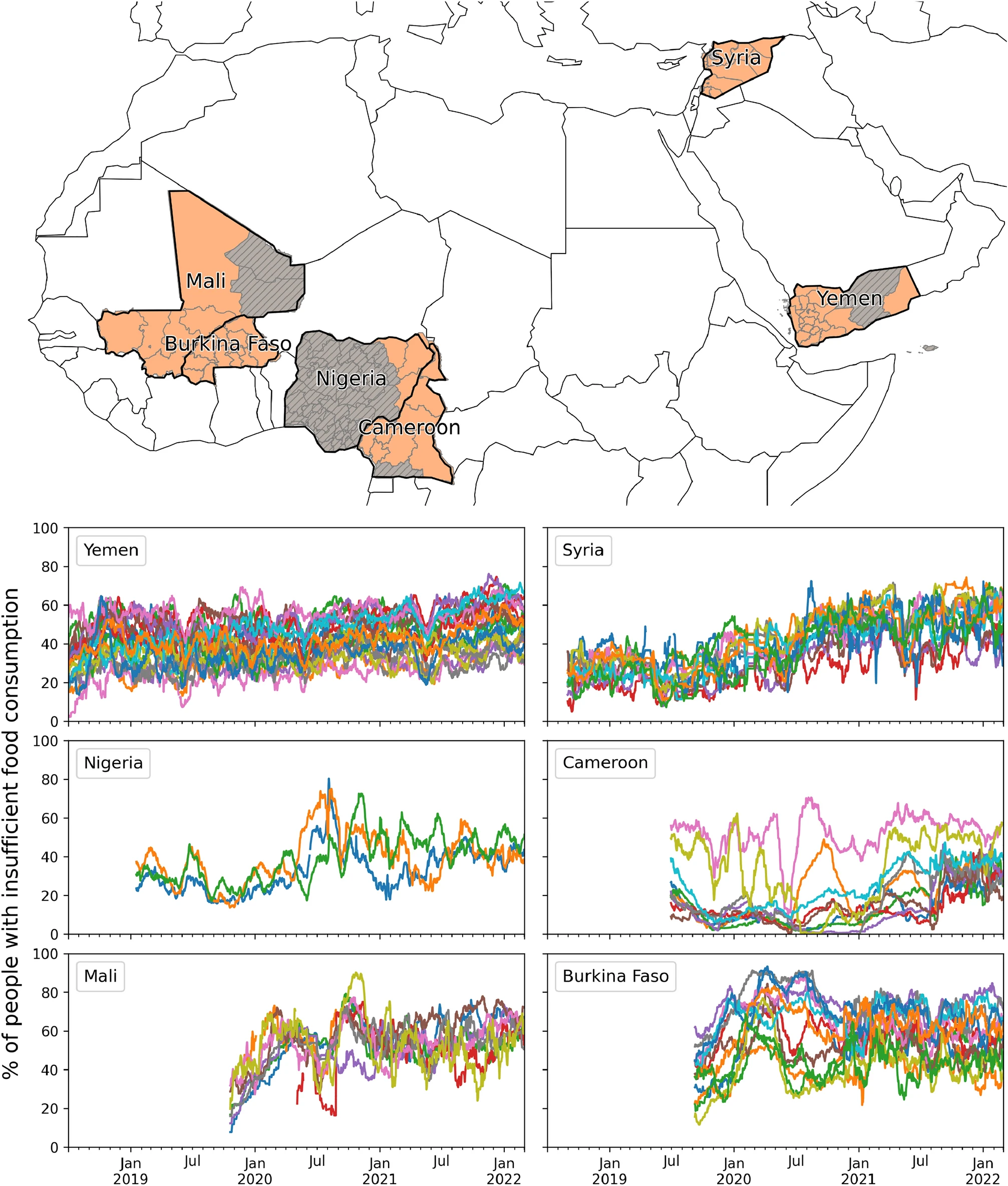
A new tool that can be used to forecast the prevalence of individuals within a country that may have insufficient access to food — known as food insecurity — up to 30 days into the future is presented in a study published in Scientific Reports. The authors suggest that the tool could aid decision makers in countries at risk of food insecurity and help facilitate more timely responses.
Elisa Omodei and colleagues developed the tool using food consumption data from Burkina Faso, Cameroon, Mali, Nigeria, Syria and Yemen — all countries that have recently experienced acute food insecurity — between 2018 and 2022. The authors enhanced their tool with data on conflict-related fatalities, food prices, extreme weather events and the occurrence of Ramadan — as food consumption patterns within much of each country are altered during this month of the Islamic calendar — throughout this period. They then used their tool to estimate the prevalence of households at risk of insufficient access to food between October 2021 and February 2022.
The authors found that their tool was able to forecast the prevalence of food insecurity within Yemen and Syria with 99% accuracy one day into the future and with 72% and 47% accuracy, respectively, 30 days into the future. However, they found that for the remaining four countries, which had less available food consumption data than Syria and Yemen, the tool’s predictions were not as accurate. This highlights that the tool’s forecasts are more accurate when using food consumption data collected at regular intervals over long periods of time and across a broad range of geographic areas.
The authors suggest that their tool could complement existing techniques for modelling food insecurity by providing rapidly available forecasts using real-time data. Their tool’s predictions could be further improved by incorporating mobile phone data or automated text mining of news, they add.

